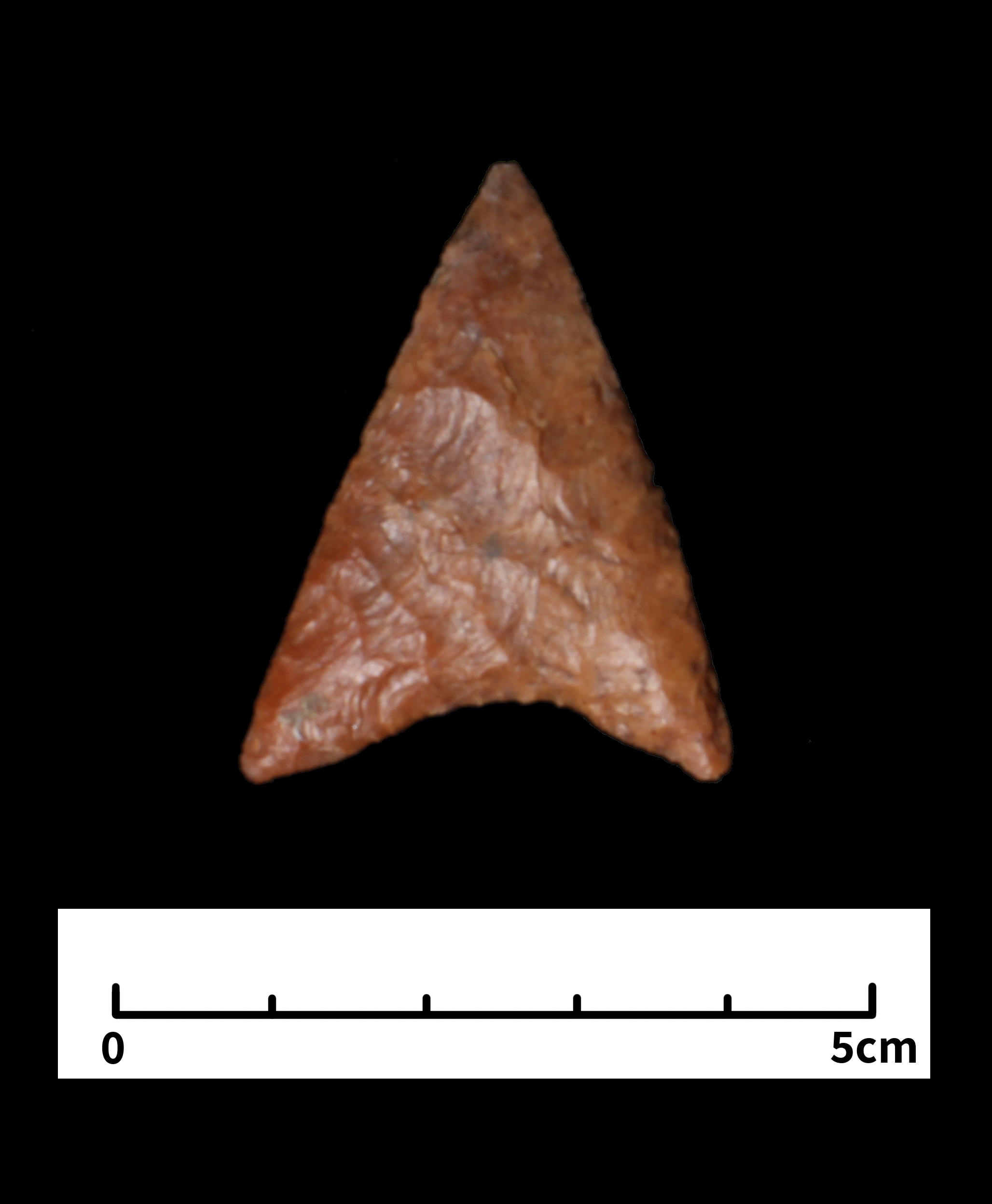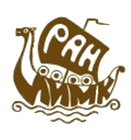Kostenki 6 Streletskian point
>39,000 years old (?) (age uncertain)
Kostënki 6 comprises two adjacent archaeological sites: Streletskaya 1 and Streletskaya 2. Streletskaya 1 was excavated by S.N. Zamyatnin and P.P. Efimenko in the 1920s, and then later by A.N. Rogachev. However, Kostënki 6’s most extensive excavations were at Streletskaya 2, carried out by Rogachev in 1952-53, when he found an archaeological layer containing an important stone tool assemblage.
Due to Rogachev’s work, Kostënki 6 now gives its name to the Streletskian archaeological culture. The Streletskian’s most characteristic stone tool is the Streletskian point: a triangular and usually concave-base point fashioned from careful bifacial working. This example is one of two found by Rogachev at Kostënki 6.
Recent radiocarbon dating has shown that the archaeological layer at Kostënki 6 contains animal bone older than 42,000 years old. However, Rogachev’s fieldwork showed that the archaeological layer contained material that had been redeposited into an ancient ravine channel from its initial position. It is therefore difficult to know the precise age of the stone tools that he recovered.
(Artefact housed at the Institute for the History of Material Culture [Palaeolithic Division], Saint Petersburg.)








